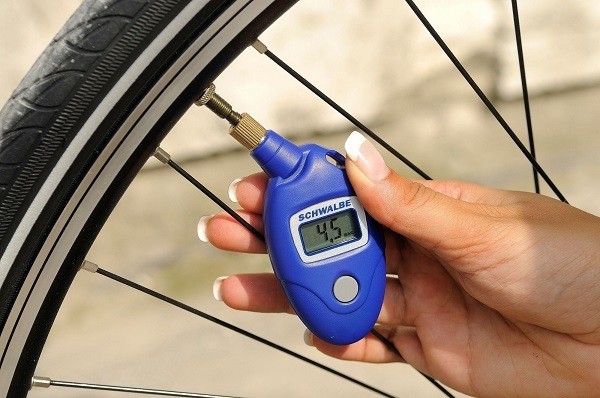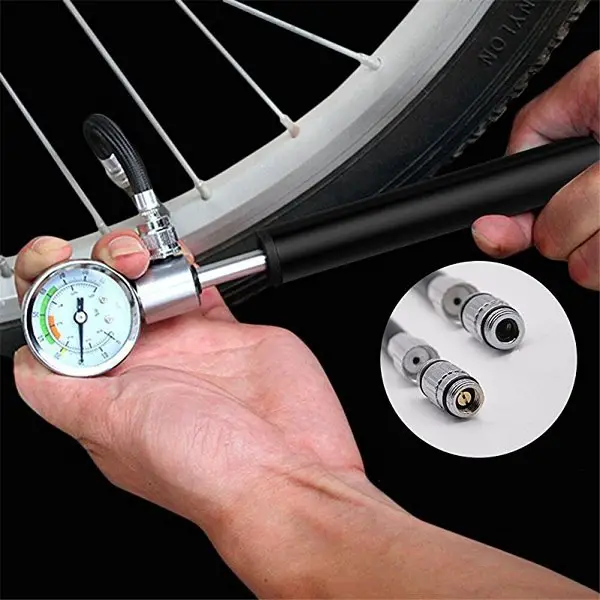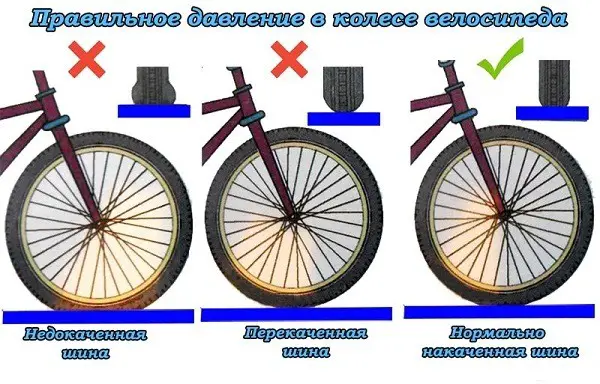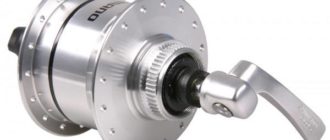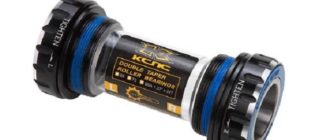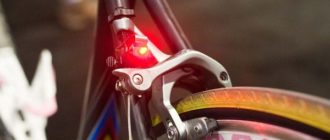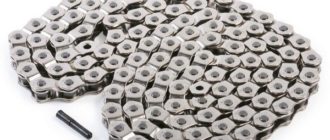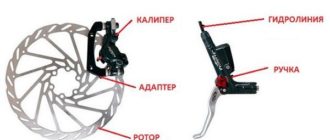A bicycle pressure gauge is an indispensable device for the cyclist, which helps to measure the pressure level in the wheel chamber. You should not neglect this value, because the comfort of riding your favorite bike depends on this level. But most importantly, the value of the pressure depends on the safety of the cyclist on the roads.
Unfortunately, only a small fraction of cyclists pay attention to the bicycle pressure gauge. Many are still to measure the pressure in the tires squeeze the wheel of the bike with a clever look, assuming that even without a pressure gauge will achieve the necessary level of pressure in the tube.
First, the constant squeezing of the tires causes abrasions that, over time, cause cracks and punctures in the bike’s tires. Second, the way you measure pressure with your fingers, unlike a pressure gauge, will not give you numerical results that you can rely on.
How a bicycle pressure gauge works
A pressure gauge is a device for measuring air pressure in bicycle tires. The device is a dial, on the scale of which you can track the exact value of the indicator.
The scale shows the number of atmospheres in the bicycle wheel chamber. Based on the result and comparing the value with the norm, you can easily determine whether the wheel needs to be inflated or drained of excess air.
Beginners at first may well neglect such a device, if their trips are small in distance and happen quite rarely.
But there are times when the cyclist must periodically check the tire pressure level:
- A bicycle is a daily means of transportation. That means you can knowingly put yourself in danger.
- Constant cycling training and participation in athletic disciplines.
- Performing difficult acrobatic elements and tricks on the bike. Including jumps.
Remember, it is up to you to take care of your own safety. If the tire tube is not inflated to the proper level, you can lose control and fall off the bike.
How to use a bicycle manometer
A bicycle manometer is used to measure the pressure as you inflate your bike’s inner tubes. Therefore, the pressure gauge often comes with a pump. Despite this, it can always be purchased separately.
Use the following steps to measure the pressure in your bicycle tires with the pressure gauge:
- Unscrew the cap of the nipple located on your bicycle wheel.
- Attach the pressure gauge tightly to the open nipple. Make sure that no air escapes from the wheel chamber.
- Measure the pressure level in the tube. On electronic gauges, reset the previous reading.
- After measuring, screw the valve cap back on.
- Compare the value with the allowable limits.
As you can see from the instructions, it’s pretty easy to use the gauge.
Types of bicycle pressure gauges
There are many types of modern pressure gauges. Models of bicycle pressure gauges differ in terms of criteria:
- Size:
- compact;
- medium;
- large;
- Part of the kit:
- with a pump;
- without a pump;
- Method of operation:
- electronic;
- mechanical.
Each model has its own advantages and disadvantages. Future owners should review the options before buying and opt for the model with which it will be most comfortable to measure the pressure in the chamber.
The main criterion when choosing is the presence of a pump in the kit. Consider in detail the positive and negative sides of the pressure gauge complete with a pump and without it.
Pump complete to the pressure gauge
This device for measuring the pressure in the tires of the bicycle can be complete with a pump:
- manual;
- foot.
The difference between the models is the scale and the magnitude of the error.
The advantages of the kit:
- Reduced time. While you inflate the tires, the pressure gauge measures the pressure.
- Low cost. The kit’s pressure gauge will cost much less than buying it separately.
The disadvantage of the kit is the possibility of gauge error. Since mostly mechanical gauges are used.
Separately manometer.
Such a device is convenient to take with you on a trip. The pressure gauge will not take up much space, and you can easily measure the pressure in the tires of the wheels of the bicycle.
Advantages of a stand-alone device:
- If the pump fails, the pressure gauge can still be used for its intended purpose. What the pressure gauge that comes with the pump will not.
- The compactness and light weight allow you to take the device with you on a trip.
The disadvantage of a separate device is the high cost compared to the manometer that comes with the pump.
Characteristics
By studying the features of the models of the pressure gauge, it is easier to choose the ideal option for yourself.
The main characteristics of the bicycle pressure gauge, which you should pay attention to before buying a device:
- Units of measure.
- The mechanical gauge that comes with the pump has two units of measurement – Bar and PSI (LBS).
- The stand-alone mechanical model has only one unit of Bar, and the gauge itself is smaller.
- Electronic models have the ability to switch between units.
- Type of nipple. The nipple is differentiated by the number of nozzles:
- With one nozzle.
- With additional nozzles (Schrader or Presta).
- Measurement range available for pumping air into the chamber.
What does the pressure depend on
Increased or decreased pressure inside the wheel chambers is far from uncommon. Deviation from the norm depends on many factors, among them:
- Type of tire rubber:
- Slick – an average level in the chambers is recommended.
- Semi-slick – it is optimal to inflate the chambers to the maximum.
- Dirt – it is better to leave the level at a low level.
- Bike model:
- Urban – optimally inflate to 7-9 atmospheres.
- Mountain bikes – do not overinflate in any case because of the high load.
- Highway – it is better to inflate to the limit, so the athlete can achieve maximum speed. It is recommended to check the pressure level regularly and pump up.
- Season of the year:
- Summer – air increases due to high temperatures, so it is recommended to reduce the pressure in the tires of the bike.
- Winter – be sure to use higher pressures to decrease stress on your treads.
- Weight of the cyclist.
The heavier the athlete, the higher the recommended tire pressure level. Don’t forget to add the weight of all your gear to your weight.
- Road Performance.
A bicycle’s tire pressure affects road safety. If it is too low or too high, the cyclist can not keep his balance and fall. And a fall at speed is usually always accompanied by injury.
-
- Overpressure if:
-
- the route is over rocks, snow, or sand;
- Low air temperature (winter season).
-
- Reduce pressure if:
-
- it is necessary to soften braking;
- the route is on dirt or asphalt;
- High temperature (summer season).
How much pressure should be in the tubes
Each sportbike has its own optimal pressure setting:
- mountain bikes – 2.38-4.2 atm;
- city bikes – 6.45-9.18 atmospheres;
- road bikes: 6.5-9 atmospheres.
The units of pressure inside bicycle tires are:
- Pa – Pascals;
- Bar – atmospheres;
- PSI – pound-force per square inch.
The ratio of values is as follows: 1 Bar = 100,000 Pa (100 KPa) = 14.504 PSI.
Usually, the allowable pressure value in the tube is indicated on the side of the bike tires themselves.
Advantages and disadvantages of bike pressure gauges
Among all the advantages of pressure gauges, we will note the main advantages:
- Safety of the cyclist. Perhaps this is the most important point. The pressure gauge allows you to determine the pressure, and a deviation from the allowable values can lead to bruises and damage.
- Ease of use. The pressure gauge can easily be used by a child. To measure the pressure, it is enough to perform a few simple steps.
- Low cost. Buying a pressure gauge will not be a blow to the wallet, but its usefulness will be invaluable.
- Speed of application. To measure the pressure it is worth spending less than 10 minutes. This is not a long period of time to neglect your health and safety on the road.
- Accuracy of measurements. Modern bicycle manometers allow you to make measurements that are as close to the real thing.
Disadvantages of velomanometers:
- There is no automatic fixation, you need to hold the device yourself.
- The pressure gauge included with the pump can not be used if the pump breaks.
Average pressure in the wheels of different types of bicycles
For bicycles, it is important to observe the pressure level regardless of the model of bike. As mentioned earlier, the minimum and maximum allowable values are spelled out on the tires. It is not a good idea to set the pressure to the extreme value, as this can cause injury to the rider or damage to the bike.
- At the maximum level, it is possible to tear the cords or break the tube.
- At the minimum level – there is a risk of damaging the rim or tire, as well as puncturing the tube.
Let’s take a closer look at the tube pressures of mountain bikes and road bikes:
- Mountain bikes. The optimal pressure value is the average value indicated on the tire. For example, if the tire indicates 3-5 Bar, the optimal value is 4 Bar.
- Road Bike. For road bikes it is very important to keep the right value. The recommended pressure level is from the average to the maximum value prescribed on the tire.
Compliance will allow better control of the bike on the road, as well as ensure the safety of the athlete while riding.
Tips for choosing a bicycle pressure gauge
- In practice, those models of pressure gauges that come with a pump have shown themselves better.
- Decent options start from 1000 rubles.
- Cyclists who ride a road bike, it is better to choose more expensive models. Since they have to use the gauge every day and find out the most accurate results.
Choose the model that is most convenient for you to use.
Conclusion
The pressure gauge is an indispensable thing for cyclists. The device allows you to accurately measure the level of pressure in the wheel chamber of the bicycle. Such a procedure should be performed once every few days, and for road cyclists – every day before the race.
The pressure gauge allows you to avoid the emergencies that arise when you lose your balance. With a bike manometer, you will keep yourself safe from injury and your bike safe from breakage.

